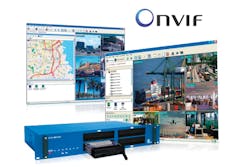Inside ONVIF's new conformance enforcement and education initiative
Last week, ONVIF unveiled a new two-fold initiative aimed at clamping down on manufacturers who falsely claim that their physical security devices are compliant with the organization’s standards, as well as educating the market about what requirements have to be met before products can be advertised as ONVIF-conformant.
According to Per Björkdahl, chairman of the ONVIF Steering Committee, the credibility of the ONVIF brand is “crucial to the success” of both the standard and the organization, as a whole, moving forward which was one of the primary factors behind the launch of this campaign. However, Björkdahl said that oftentimes manufacturers are not deliberately misrepresenting their products as being ONVIF-conformant but are simply ill informed about what is required from them before they can make those claims.
“As ONVIF profiles have increased in deployment and acceptance globally, we have seen a few issues with claims of conformance or misuse of our trademarks,” said Björkdahl. “In many cases, we are seeing that the invalid claims are the result of a lack of understanding about the processes, and this is why we are working hard to communicate better with our members about what is required of them. Another area we need to educate the market about is regarding the use of rebranded OEM products. ONVIF certifications on OEM products are not transferable, and so members who OEM a product which already has a claim of conformance must retest and submit new documentation to show valid conformance.”
Earlier this year, ONVIF created the new “Observer” membership, which allows consultants, systems integrators and members of the media to validate claims of conformance with an ONVIF profile. As a result, Björkdahl said they’ve seen an increase in reports of issues with particular products.
“By the nature of their businesses, some observer members are industry watchers who are well positioned to monitor trade advertisements,” Björkdahl said. “Some of these members have been able to spot companies advertising ONVIF conformance that are not ONVIF members and who do not have conformant products listed on the ONVIF website, and have been able to notify ONVIF of these occurrences.”
Additionally, Björkdahl said that they’ve also run into issues with manufacturers that have decided to leave ONVIF and were found to still be using the organization’s logo. Those companies subsequently ceased using the ONVIF logo, according to Björkdahl.
“In recent weeks, ONVIF has received reports of more invalid claims of membership and conformance,” Björkdahl added. “We are investigating each report and will be taking the appropriate steps required on a case-by-case basis.”
Moving forward, Björkdahl said that companies found to be in violation will be instructed to immediately stop advertising their products as being ONVIF-conformant. He said ONVIF reserves the right to take action against these companies if they fail to do so. “ONVIF will reiterate the conformance process and rules of membership to member manufacturers that claim conformance without having submitted the requested paperwork to ONVIF,” explained Björkdahl.
Björkdahl reiterated, however, that many of these false claims are unintentional and are simply the result of a lack of knowledge in the industry, which is why education is a big component of this initiative.
“As previously stated, we believe that many of these false claims of conformance are based on a lack of understanding of the conformance process, which is why our initial emphasis is on education. One of our first steps will be an internal communication reminding all members of their obligations with the use of the logo as well as claims for conformance,” added Björkdahl. “More publicly, the market will see us develop methods such as an e-training tool to help educate the members who may not be familiar with the exact procedures they need to follow. If further education is needed we will work with the membership to develop this.
Björkdahl said he believes that this new campaign will help to “reemphasize the integrity of the standards process” to the manufacturing, specifier and end user community. “Our external activities will include provide additional training on our website, as well as an updated conformance process document clarifying some areas in which our members have asked for guidance,” said Björkdahl. “Upon receipt and confirmation of an issue, we will be communicating directly with the manufacturer in accordance with our conformance process.”
Bill Bozeman, president and CEO of PSA Security Network, said that while he thinks having product standards is a great idea, he doesn’t believe that security integrators are necessarily worried about whether or not the products they’re installing on projects conform to ONVIF requirements.
“I honestly don’t believe that this is something that the integrators worry about or plan their business around,” said Bozeman. “It’s more of a manufacturers issues. Now, having said that, I think that compliance and standards are great. Having a system that monitors compliance with the standards is a very good idea and I don’t think the integrators would disagree with that at all. I think the majority of integrators would absolutely agree, but I would tell you they’re not sitting around worrying about it because it is not currently impacting the way they run their business.”
About the Author
Joel Griffin
Editor-in-Chief, SecurityInfoWatch.com
Joel Griffin is the Editor-in-Chief of SecurityInfoWatch.com, a business-to-business news website published by Endeavor Business Media that covers all aspects of the physical security industry. Joel has covered the security industry since May 2008 when he first joined the site as assistant editor. Prior to SecurityInfoWatch, Joel worked as a staff reporter for two years at the Newton Citizen, a daily newspaper located in the suburban Atlanta city of Covington, Ga.

